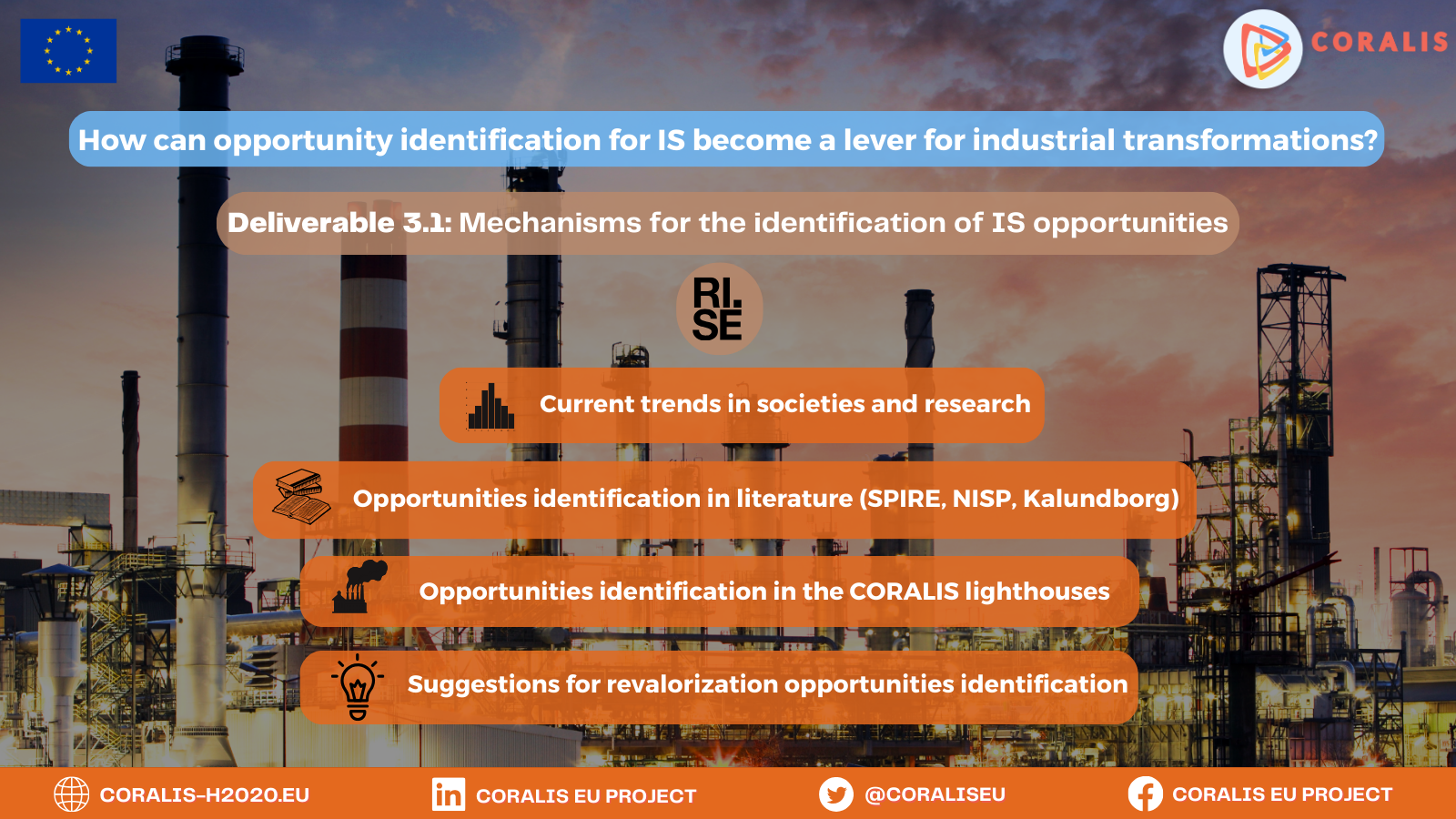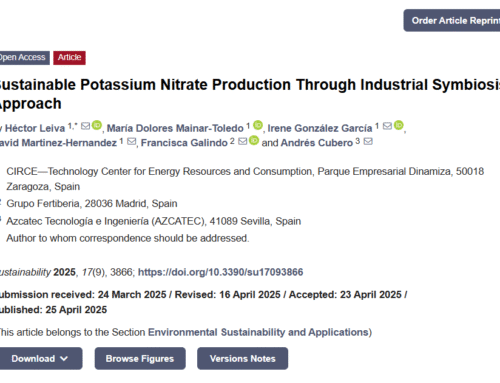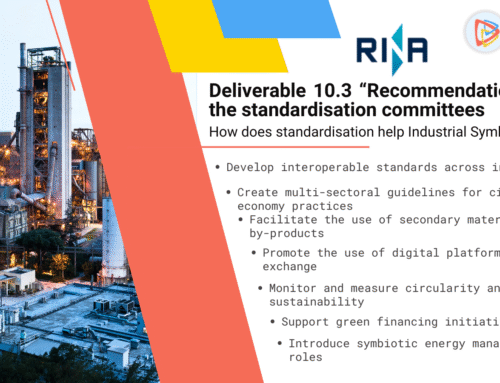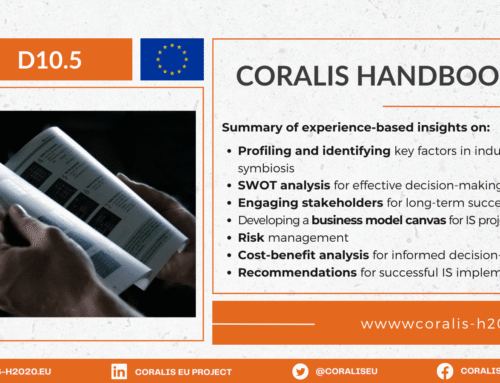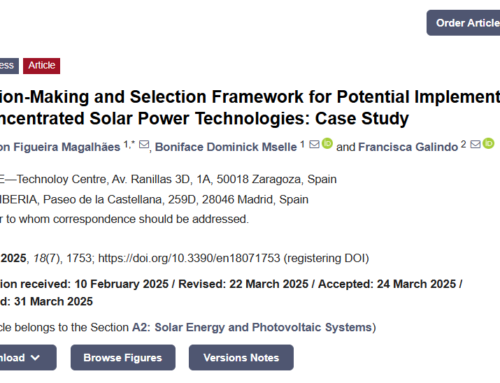Deliverable 3.1: Mechanisms for the identification of IS opportunities, by our project partner RISE, aims to analyze the three CORALIS demonstration sites and focus on understanding their respective opportunity identification processes for industrial symbiosis, and connecting this understanding to previous work done on this topic as well as new perspectives on symbiosis in connection to the societal sustainability transformation.
The report provides an overview of the opportunity identification processes in the CORALIS Lighthouses, describing how they each have worked with the general process steps of mapping, screening and matchmaking needs and resources in their respective contexts. The report also includes a summary of outcomes regarding opportunity identification from previous literature and large industrial symbiosis programmes and projects (e.g. SPIRE projects, NISP, Kalundborg). This previous and current work were then analyzed in the context of current trends in society and research, and the trajectories needed for a strategic sustainability transition with sufficient speed and scale.
The results and conclusions of the deliverable are in part general, e.g. that opportunity identification for industrial symbiosis is a process that is complex and “human-centered”, and that re-evaluating some of the tools and methods currently used for opportunity identification in industrial symbiosis (in particular how they are used) may both speed up collaborative efforts and enhance positive impacts from industrial symbiosis to the overall sustainability transition. There are also specific conclusions for the context of CORALIS, including suggestions for how to identify potential revalorization opportunities in the demo-sites, both during the project and beyond.
Some key conclusions of D3.1 are:
-There is a need to rethink the tools and methods used for opportunity identification in industrial symbiosis, with the latter being perceived as a long-term transformative process rather than a waste/emission reduction solution to a specific problem.
-A more human-centred approach (as opposed to a tools-centred) that is more explorative (as opposed to solutions oriented) would help create better opportunities for spreading the industrial symbiosis approach.
-The identification of opportunities for industrial symbiosis needs to take into account the socio-technical and socio-ecological dynamic long-term effects for it to be a truly transformative process and to contribute with its full potential to the sustainability transition.
-The opportunities identification process needs to also capture system effects in order to appropriately avoid creating undesired, unforeseen impacts, handle the variable of risk, manage potential conflicting goals as well as enable long-term relevance and value creation.
-There are significant differences between symbiotic solutions linked to primary production processes (e.g. residual streams) and indirect processes (e.g. utility streams), which thus each poses different demands on the approach and methods used for opportunity identification.
-The case of Brescia represents a setting of industrial companies from the same sector in close geographical proximity with each other which facilitates the IS process. Still, IS interactions with industries from other sectors also needs to be investigated in order to capture the full symbiotic potential of the industries in the area.
-For the case of Escombreras, the local administration is identified as a key actor to increase IS awareness in the region and incentivize further collaboration between industries. The impacts from the industrial symbiosis efforts (e.g. environmental, economic, managerial) need to be continuously monitored to validate the technology and processes used.
-The case of Frövi illustrates the idea that symbiosis rather is a long-term, co-created development process, not at singular resource efficiency effort. It highlights that one specific symbiosis development should be seen in a larger context, as part of a local or regional potentially transformational development, involving stakeholders also outside the industrial sectors .
Read the full report for more details here.


